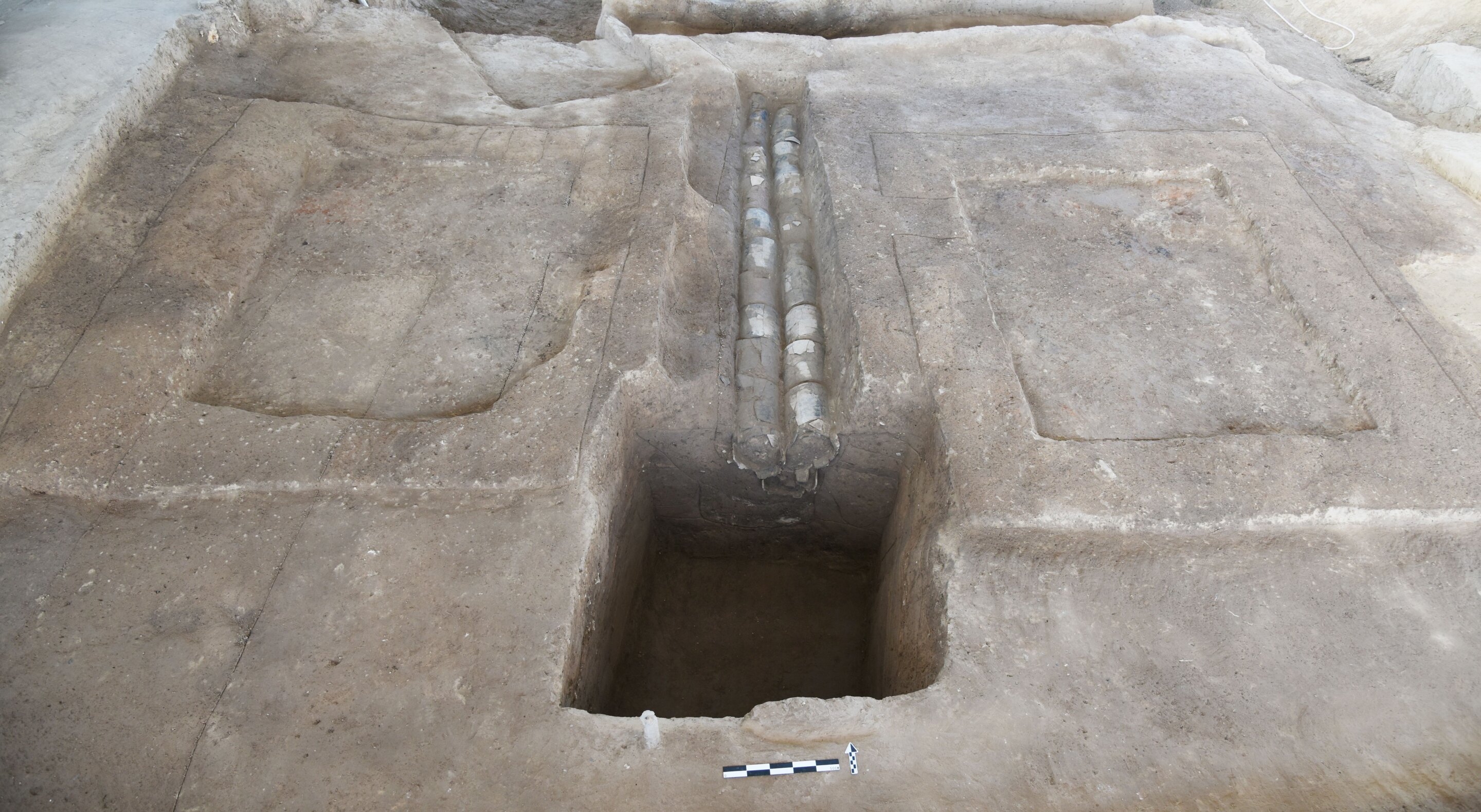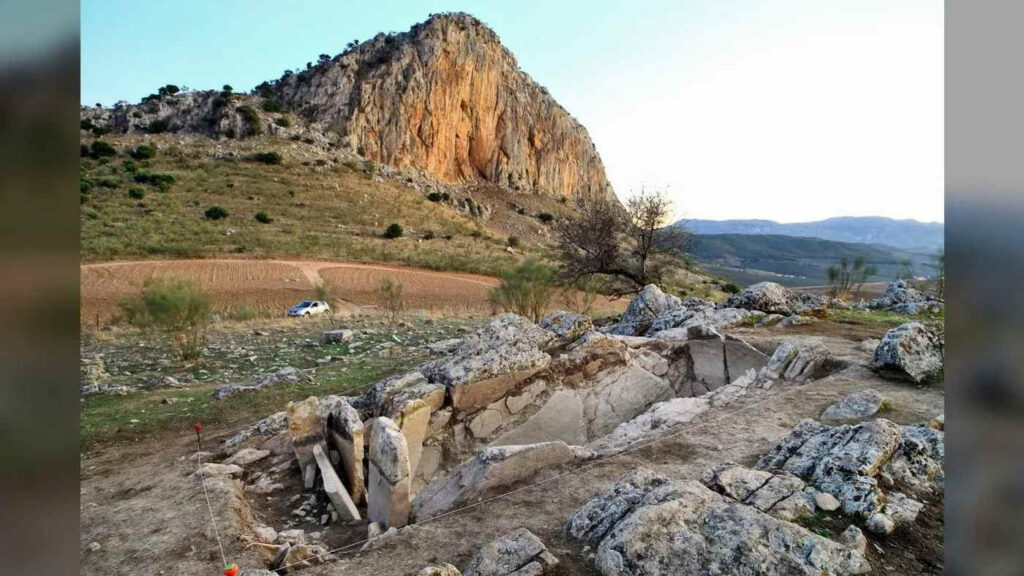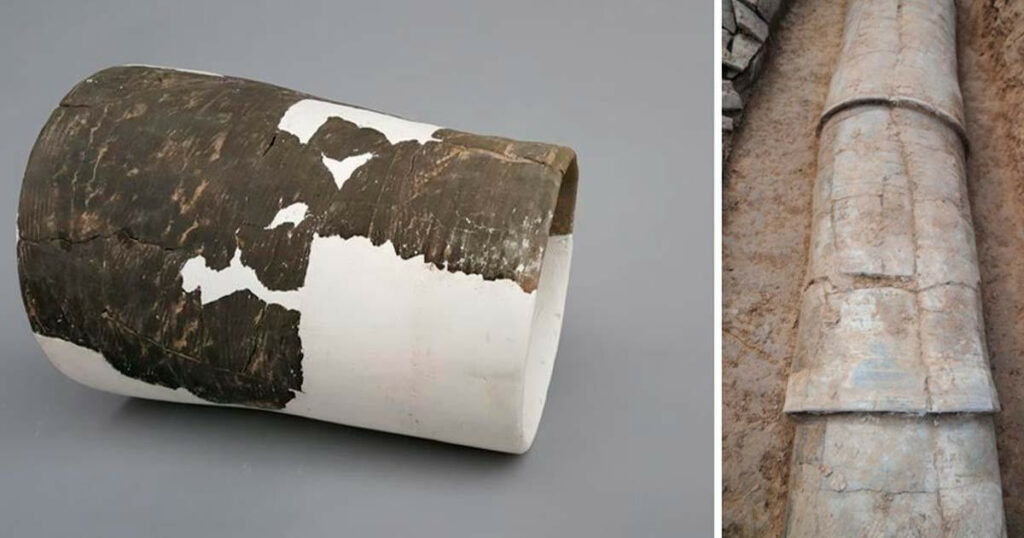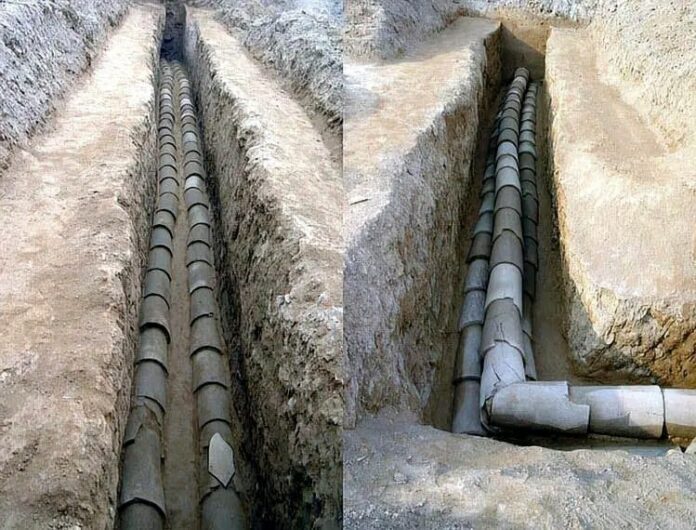In the northeastern plains of China, a remarkable archaeological discovery has shed new light on the early development of human civilization. Nestled in the Huaiyang District, the ancient town of Pingliangtai has yielded an astonishing find – a sophisticated ceramic drainage system that dates back 4,200 years, potentially the oldest of its kind in the world.
The Discovery

The discovery, detailed in the journal Nature Water, has captivated the attention of archaeologists and historians alike. Unearthed by a team of dedicated researchers, this ancient engineering marvel provides a unique window into the ingenuity and cooperative spirit of the town’s inhabitants.
Engineering Marvels in a Wet World
Pingliangtai, situated on the vast Huanghuaihai Plain, faced significant environmental challenges. With monthly rainfall reaching up to 500 millimeters during the monsoon seasons, the town’s residents had to devise innovative solutions to combat flooding and protect their earthen architecture.
The Ceramic Pipe Network

The drainage system that emerged was a true testament to the town’s engineering prowess. Buried beneath the surface, a network of expertly crafted ceramic pipes, measuring 30-40 centimeters in length and 20-30 centimeters in diameter, was interconnected to channel water away from the elevated town into drainage ditches and eventually a moat.
A Communal Effort
What makes this discovery particularly significant is the evidence it provides for cooperative social governance. The drainage system, operated collectively from individual households to the community level, suggests a society with low social stratification, where the common good was prioritized over individual interests.
Challenging Historical Perspectives

This finding offers an alternative view to the long-held belief that control of water resources led to the birth of coercive state power in ancient civilizations. Instead, Pingliangtai demonstrates how environmental challenges, technological innovations, and social institutions converged to form a cooperative approach to water management.
Implications for Understanding Early Human Civilization

The Pingliangtai drainage system not only showcases the ingenuity of ancient Chinese engineering but also provides valuable insights into the evolution of human cooperation and social organization. It challenges us to reconsider our understanding of how early societies tackled environmental challenges and developed complex infrastructure.
As we continue to uncover the secrets of our past, discoveries like Pingliangtai remind us of the remarkable achievements of our ancestors and the diverse paths that human civilization has taken throughout history. This ancient town, with its sophisticated ceramic drainage system, stands as a testament to the resilience and ingenuity of the human spirit, even in the face of daunting environmental obstacles.
